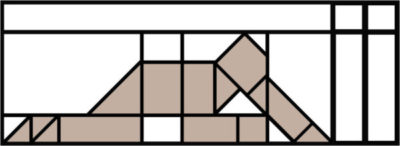Discover Magazine’s Timothy Meinch has a fantastic deep-dive into the world of deep breathing and its manifold health benefits.
Basically, you and I probably breathe much too quickly for our well-being.
Chronic stress can lead to shallow, quick breathing, and shallow breathing can lead to chronic stress.
And of course, we all know chronic stress can contribute to or even provoke just about every malady under the sun.
Here’s the money extract:
“If you pushed through to achieve that full exhale a moment ago, you might have noticed a prolonged, satisfying inhale immediately followed. Do it on repeat for a simple practice of deeper, slower breathing. In your body, this biologically signals “all is well” to the brain and a full cast of players. The heart rate slows; the vagus nerve engages, which is a vital component in the rest-and-restore parasympathetic nervous system; and the brain releases your feel-good serotonin and dopamine hormones.”
Meinch adds that “Various research has connected conscious breath work to treating symptoms of anxiety, sleep apnea, PTSD, chronic pain and depression.”
Read the whole thing. It’s excellent.
Now….
Healthline has a tremendous overview of “belly breathing” or “abdominal breathing.”
They point to research showing it can help with IBS, depression, anxiety, insomnia, blood pressure, heart rate, PTSD, and even your core muscle stability.
Interestingly, it can also help you avoid injuring certain muscles.
Here’s why — when you don’t use your diaphragm properly, you can develop conditions that cause the lungs to lose their elasticity.
Consequently, you unwittingly start using your chest, back, and neck muscles to help you breathe, and that puts unnecessary pressure on them.
Improper breathing can therefore lead to musculoskeletal problems, as well.
So what’s a shallow breather to do?
Healthline has steps for Diaphragm Breathing.
Basically.
-Lie in a comfortable position
-Relax
-Put your hand on your stomach and chest
-Breathe in through your nose for two seconds, and try to keep your chest still. Your stomach should be the doing the moving.
-Finally, “Purse your lips, press gently on your stomach, and exhale slowly for about two seconds.”
Then do it again. Try 10 minutes to start.
There are other breathing exercises you can try. Click here for them.
Now…….
A few things to mention.
You might struggle with some anxiety when you start.
When I try deep breathing, I tend to get anxious. I’m too self-aware, I wonder if I’m doing it right, I think I actually might breathe faster.
You might feel the same.
That’s why it’s important to give it more than just one or two tries. The longer you do it, the more relaxed you’ll be, doing it. And that’s the point.
Second, Brennan Manning once suggested deep breathing with the phrase, “Father, I belong to you.” Breathe in on “Father,” and exhale on, “I belong to you.” I’ve found profound comfort in deep breathing with that phrase.
It’s a surprise, then, that I don’t do it more often.
And that’s because it’s hard work. It’s hard work to take 10-20 minutes to lie on your bed, in the quiet, and just breathe.
But your body and mind will thank you.
[Photo: Cadaques, Spain, a coastal town in Spain that inspired Dali and numerous artists. If you want to try deep breathing, it would be nice to do it from a boat, just off the coast of Cadaques. But if that’s not possible, I suppose your bed will do].

